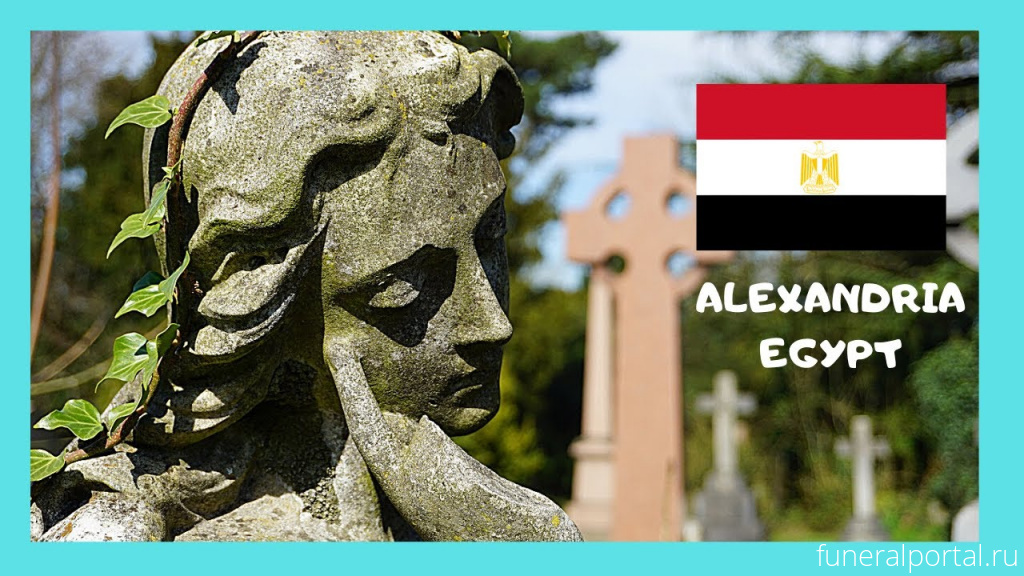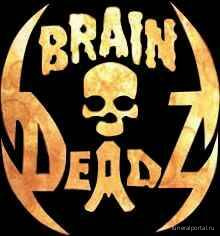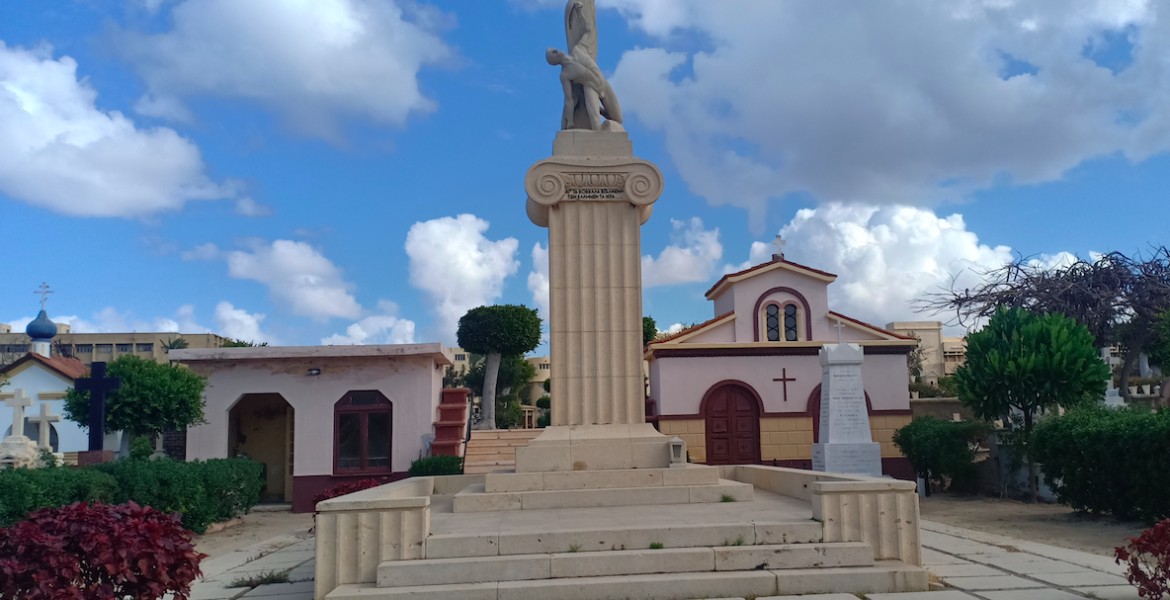
Once you enter this historical site, you will travel back in time as there is so much detail and stories to be told. And funny enough, you will never get depressed; a feeling commonly experienced once stepping inside a cemetery.
Despite its very important history, not many people know about the Greek cemetery located in the Egyptian coastal city of Alexandria.
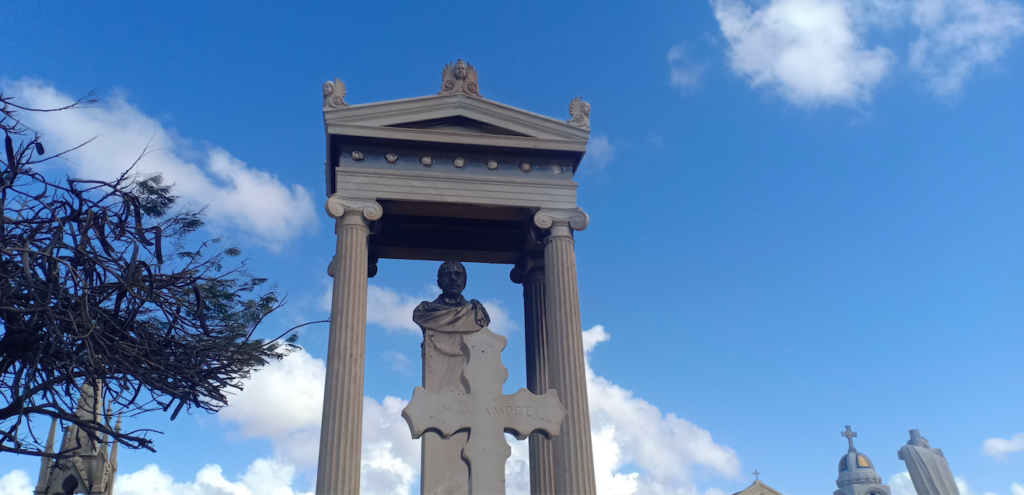
Kavafis
Kavafis
As soon as you step inside the entrance, there is a chapel for the burial service. Close to the indoor building, the great Alexandrian-Greek Konstantinos Petrou Kavafis rests in peace at his family’s tomb.
Wealthy Greek Families of Alexandria
Here there are also the tombs of prestigious families who belonged to the Greek community of Alexandria, including Anastasis, Salvagos, Zervoudakis, Kazoulis, Rallis, Rodokanakis, Kasdalis, and Averoff. Their mausoleums’ design may bring the sensation of standing in front of an iconic Greek temple such as the Erechtheum.

Salvagos
Salvagos
Constantine Salvagos (from Chios) contributed to founding the National Bank of Egypt. He was a prestigious figure amongst Alexandria’s cosmopolitan society, and he presided over Alexandria’s Greek community.
Averoff
George M. Averoff (from Metsovo) was a businessman who is known for founding several schools in Egypt and Greece. He was also the president of the Greek community before Salvagos.
Kutsika
One of the Greek benefactors also buried here was Kutsika who built the Greek Hospital in Alexandria currently known as Gamal Abdel Nasser Hospital.
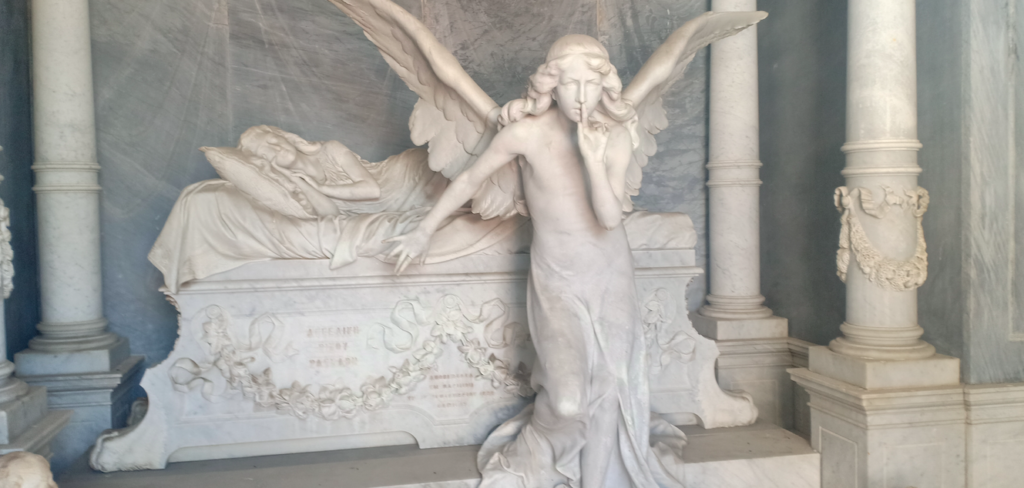
Zervoudakis
Zervoudakis
In this regard, it is worth mentioning the embellished tomb that Zervoudakis built to bury his daughter who died at the age of 19. Preceding her sarcophagus, there is an angel’s sculpture with its finger in front of the mouth, asking visitors to remain silent.
Greek pilots
With the remains of the Greek soldiers who passed away during the Second World War in the Middle East, a cenotaph was established in their honour.
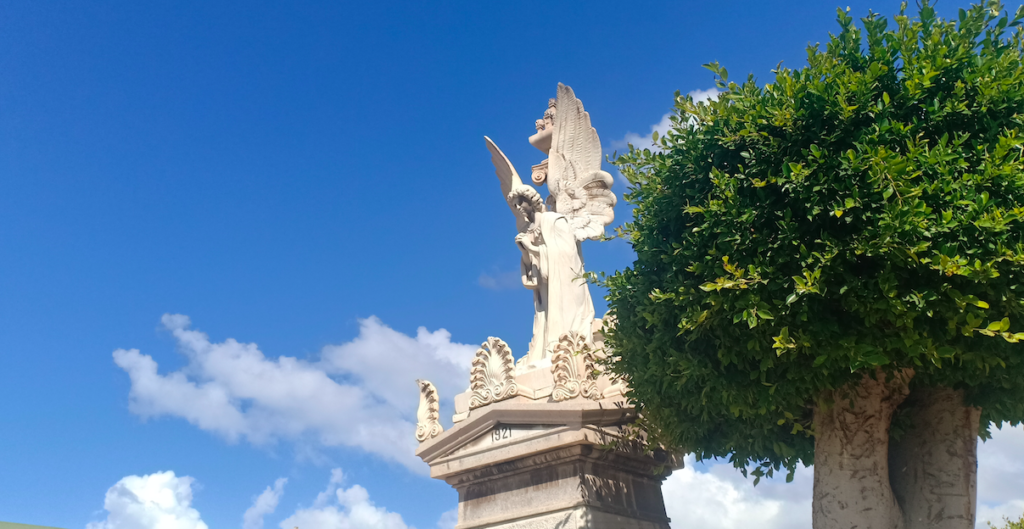
Russians after the Bolshevik revolution
On the other side, the cemetery does not only comprise of Greeks who passed away but also it served as a shelter for the Russians who died and who came to Egypt after the Bolshevik revolution broke out.
Greek-Orthodox Levantines
If you see Arabic and French phrases written on some graves, do not be surprised! It is where some Levantines, who followed the Greek-Orthodox doctrine and came to Egypt, were buried.
A historic fact
A quick fact about the Greek cemetery is that it was founded to serve the needs of the community, on a large land situated in the Al Shatby neighbourhood. The piece of land was given by Mohamed Aly Pasha (Mohamed Ali was originally Albanian, and his hometown was Kavala. He ruled Egypt and most historians agree that he is the founder of Modern Egypt.)
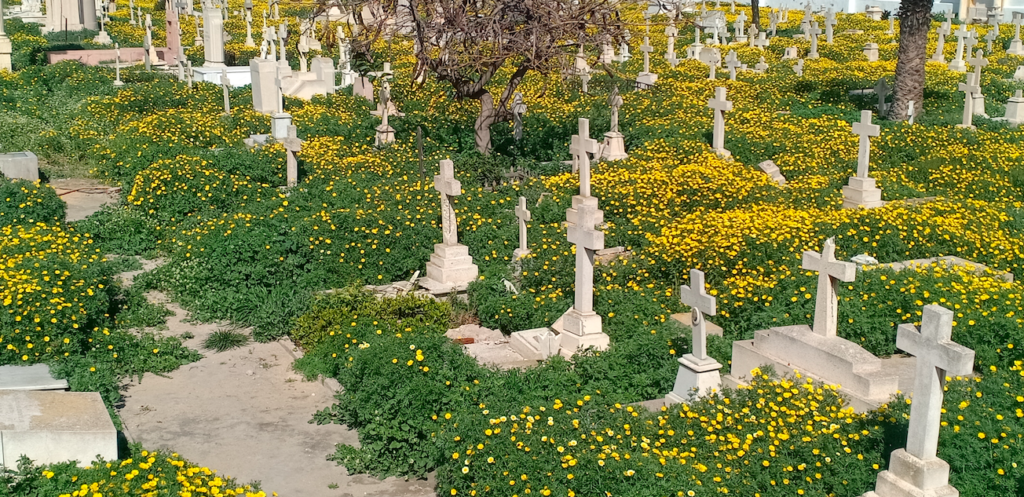
Armenian graveyard
Armenian graveyard
Finally, but yet importantly, from the Greek cemetery, you can also see the Armenian graveyard located close by. The greenery with the yellow flowers makes the Armenian cemetery a unique work of art.
By Maydaa Nadar

